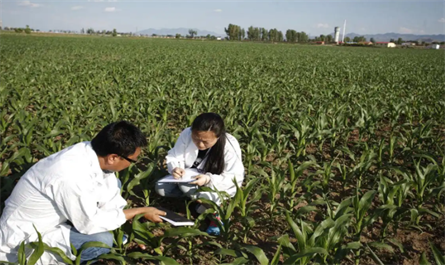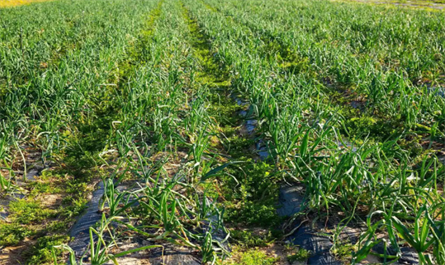The Secret of Plant Growth Regulators and Their Applications
In modern agriculture, increasing crop yields has become an important topic. As an important tool, plant growth regulators are widely used to promote plant growth, enhance disease resistance and increase yield.

The role of plant growth regulators
1. Promote cell growth
Plant growth regulators can change the characteristics of cell walls, make them loose, and induce cell growth by activating gene expression. At the same time, regulators can also induce enzyme activity, promote or inhibit the synthesis of nucleic acids and proteins, and change certain metabolic pathways, affecting cell division and elongation. More importantly, regulators can induce the expression of disease-resistant genes and enhance the disease resistance of plants.
2. Promote germination and growth
Plant growth regulators can significantly increase the germination rate of seeds, induce the formation of flower buds and the enlargement of fruits. For example, in horticultural crops, gibberellins can effectively break the dormancy of seeds such as citrus, while ethylene is suitable for strawberry and apple seeds. These regulators can also promote plant growth at the cellular level, thereby accelerating stem growth and the formation of apical dominance, and inhibiting the growth of lateral buds.
3. Hinder cell growth
However, some plant growth regulators can hinder cell elongation growth. They can increase the activity of respiratory enzymes and cell wall decomposing enzymes, promote fruit ripening and leaf fall. At the same time, these regulators can inhibit germination, promote the production of ethylene and the closure of stomata. Such characteristics are widely used in the after-ripening treatment of fruits.

Preparation and application methods
Preparation methods
The preparation of plant growth regulators needs to be determined according to specific crops. Most plant growth regulators are insoluble in water, so it is necessary to select suitable organic solvents for preparation. During the preparation process, it is necessary to select appropriate solvents according to the dosage form of different plant growth regulators, and fully dissolve and dilute them before use. In addition, the liquid should be prepared as needed to ensure its effectiveness and stability.
Application in horticultural crops
Plant growth regulators have a variety of applications in horticultural crops. For example, by the reasonable use of regulators such as gibberellins and ethephon, not only the yield of horticultural crops can be increased, but also their quality can be improved. Specifically, treating the base of grape cuttings with IBA can effectively promote rooting, while spraying gibberellins during the flowering period of tomatoes can increase the fruit setting rate. In addition, spraying an appropriate amount of BA during the flowering period of apples can significantly increase the weight of the fruit. Plant growth regulators also show obvious effects on the growth period regulation of fruits such as citrus, peaches, and grapes, providing important technical support for modern horticultural production.
Through the combination of natural science research and modern agricultural technology, humans can more effectively and sustainably improve the yield and quality of plants. Plant growth regulators play an important role in this, bringing significant economic benefits to global agriculture.

The role of plant growth regulators
1. Promote cell growth
Plant growth regulators can change the characteristics of cell walls, make them loose, and induce cell growth by activating gene expression. At the same time, regulators can also induce enzyme activity, promote or inhibit the synthesis of nucleic acids and proteins, and change certain metabolic pathways, affecting cell division and elongation. More importantly, regulators can induce the expression of disease-resistant genes and enhance the disease resistance of plants.
2. Promote germination and growth
Plant growth regulators can significantly increase the germination rate of seeds, induce the formation of flower buds and the enlargement of fruits. For example, in horticultural crops, gibberellins can effectively break the dormancy of seeds such as citrus, while ethylene is suitable for strawberry and apple seeds. These regulators can also promote plant growth at the cellular level, thereby accelerating stem growth and the formation of apical dominance, and inhibiting the growth of lateral buds.
3. Hinder cell growth
However, some plant growth regulators can hinder cell elongation growth. They can increase the activity of respiratory enzymes and cell wall decomposing enzymes, promote fruit ripening and leaf fall. At the same time, these regulators can inhibit germination, promote the production of ethylene and the closure of stomata. Such characteristics are widely used in the after-ripening treatment of fruits.

Preparation and application methods
Preparation methods
The preparation of plant growth regulators needs to be determined according to specific crops. Most plant growth regulators are insoluble in water, so it is necessary to select suitable organic solvents for preparation. During the preparation process, it is necessary to select appropriate solvents according to the dosage form of different plant growth regulators, and fully dissolve and dilute them before use. In addition, the liquid should be prepared as needed to ensure its effectiveness and stability.
Application in horticultural crops
Plant growth regulators have a variety of applications in horticultural crops. For example, by the reasonable use of regulators such as gibberellins and ethephon, not only the yield of horticultural crops can be increased, but also their quality can be improved. Specifically, treating the base of grape cuttings with IBA can effectively promote rooting, while spraying gibberellins during the flowering period of tomatoes can increase the fruit setting rate. In addition, spraying an appropriate amount of BA during the flowering period of apples can significantly increase the weight of the fruit. Plant growth regulators also show obvious effects on the growth period regulation of fruits such as citrus, peaches, and grapes, providing important technical support for modern horticultural production.
Through the combination of natural science research and modern agricultural technology, humans can more effectively and sustainably improve the yield and quality of plants. Plant growth regulators play an important role in this, bringing significant economic benefits to global agriculture.
RECENT POSTS
Featured News



